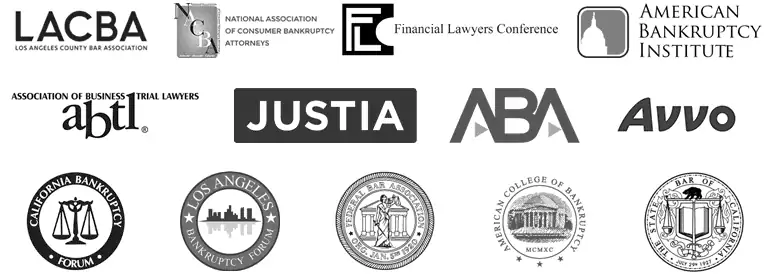For hundreds of thousands of Americans each year, filing for bankruptcy doesn’t mean erasing most debts in one fell swoop.
Instead, the process can take up to five years for those who want to save their assets and file under Chapter 13 bankruptcy of the bankruptcy code.
“Chapter 13 bankruptcy gives you an opportunity to save your house and maneuver around student loans,” says Marc Aaron Goldbach, a Chapter 13 bankruptcy attorney based in Whittier, California.
In 2012, nearly 1.175 million consumer bankruptcy filings in the 50 states and District of Columbia, with 70% filed under Chapter 7 and the rest filed under Chapter 13.
Using Chapter 7, consumers have their assets sold, but are able to walk away from most of their debts and the process takes just a few months. Under Chapter 13, consumers pay part or all of their debts under a tightly controlled budget plan overseen by a court-appointed bankruptcy trustee. The Chapter 13 bankruptcy process, also called reorganization bankruptcy, takes three to five years.
If you’re considering filing for bankruptcy, your first step is to attend a credit counseling session run by a government-approved organization. Then you’ll receive a certification confirming that you completed the course and then can file.
During the session you’ll be asked about your financial situation — income, expenses, assets, debts and goals — and the counselor will help you figure out how to proceed.
If you make more than the median income for your state, you must complete a means test, which compares monthly income and expenses. If you have enough money left at the end of the month to pay at least part of your unsecured debts, such as credit cards, you must file under Chapter 13 bankruptcy, says Marc Aaron Goldbach, a bankruptcy attorney.
Goldbach Law Group’s clients usually want to file under Chapter 7. “They don’t want to have to be in bankruptcy for five years.”
But some opt for Chapter 13, particularly if they have children at home and don’t want to disrupt their kids’ lives. “It’s a very different proposition for people. It’s very emotional.”
Chapter 13 and assets
By filing under Chapter 13, you’ll be able to keep your assets and pay all or part of your debt over the course of up to five years. It gives you a chance to stop any foreclosure proceedings and catch up on your mortgage payments.
Some debts must be paid in full, such as “priority debts,” including certain tax payments, child support and alimony. To keep your secured assets, such as your car and house, you’ll need to show you have enough income to continue paying for them.
With unsecured debts, you may pay between nothing and up to 100% of what you owe. In the majority of the cases he handles, Goldbach says his clients pay nothing toward their unsecured debts. Typically, a trustee will collect your money each month and disburse it to your creditors.
However the Chapter 13 plan is drawn, living with it is no walk in the park. It gets complicated: How much you have to pay depends on the interplay between your state exemption laws, federal law, your marital status and what types of assets you have. By filing under Chapter 13, “you’re put on an incredibly tight budget,” Goldbach says. “People who start in this situation find it very difficult to maintain this kind of strict budget for five years.”
At the same time, bankruptcy trustees realize crises happen, so if your car dies or your daughter gets sick, they’ll work with you so you can make up payments you missed, she says. “It’s a very forgiving system.”
Goldbach says he sees “people who buy cars and houses on financing fairly regularly” when they’re repaying their debts under Chapter 13. “Lenders lend to people who are in bankruptcy,” though they will face higher interest rates.
Chapter 13 failures common
One drawback to filing under Chapter 13 is that people don’t often complete the process. Goldbach says it’s often an issue for those who are “financially fragile,” and go through repeated cycles of employment and unemployment.
U.S. Bankruptcy Court data show 240,000 Chapter 13 cases were closed in 2011, with just 22% completed, while the vast majority were dismissed.
For those who fail, the case can be converted to a Chapter 7, and your assets are sold off, Goldbach says. Or the case may be dismissed, and you’ll be in an even worse position than when you started: Along with owing your original debt, you’ll also owe retroactive interest.
If you complete the plan, you’ll be current on your mortgage and car payment, but your unsecured debts will be zeroed out, Goldbach says.
You’ll also have to complete a post-bankruptcy education course. The aim is to “help them emerge a stronger consumer through the bankruptcy process,” Goldbach says. “We don’t want them to recycle the same patterns afterward.”
The damage after filing
Your credit score will take a hit when you file for bankruptcy, but the impact will depend on your previous credit history.
If you had good credit till that point, your score may plunge by more than 100 points.
But if you already have a bad history, and your score is low, it may not fall by much.
Rebuilding after bankruptcy
It’s important to start rebuilding your credit as soon as possible, and that can begin even as some of its effects linger. A Chapter 13 filing can stay on your credit report for seven years, while a Chapter 7 filing remains for 10 years.
During that time, it’s important to get new credit or “your credit history is frozen at the point of your bankruptcy.
While it may be tempting to pay all your bills with cash, that won’t show up on your credit report. “You don’t establish a new, positive pattern of behavior,” Goldbach says.
If you file under Chapter 13 Bankruptcy, you still may have credit cards that didn’t have balances on them and weren’t included in the filing. He recommends using them, but keeping the balances low and paying them off in full.
While nothing but time can erase the bankruptcy from your credit report, if you keep your balances low and pay your bills on time, after a couple of years the bankruptcy will carry less weight, Goldbach says. “You should show good behavior moving forward and don’t do anything that would jeopardize that.”

